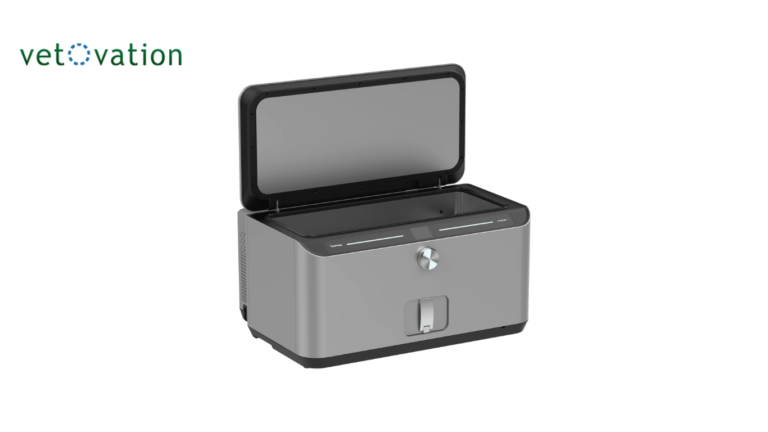
Veterinary medicine is evolving, with innovations making procedures safer, faster, and more effective. One of the most significant advancements is integrating minimally invasive surgery (MIS) and cutting-edge sterilization techniques. These innovations benefit pets and enhance the efficiency of veterinary practices. Let’s dive into how these advancements are transforming the landscape of animal care.
Why Minimally Invasive Surgery is a Game-Changer
In the future, veterinary surgeons may do many types of minimally invasive surgery routinely, including unusual ones such as removing a lobe from a lung or a tumor from the adrenal gland. Four surgical procedures are frequently performed using minimally invasive techniques in large referral hospitals. Each enables the veterinarian to perform the surgery with significantly smaller incisions than would be required with traditional surgery.
Minimally invasive surgery, as the name suggests, involves smaller incisions and less disruption to the patient’s body compared to traditional techniques. For pets, this translates into numerous benefits:
- Reduced Recovery Time
Smaller incisions mean quicker healing. Pets can return to their normal activities sooner, much to the relief of their owners.
- Less Pain and Discomfort
With reduced tissue damage, pets experience less pain, requiring fewer pain medications post-surgery.
- Lower Risk of Complications
Shorter anesthesia times and smaller wounds decrease the likelihood of complications during and after surgery.
MIS procedures are faster for veterinarians, enabling them to handle more daily cases. This efficiency and improved outcomes make it a win-win for everyone involved.
The Role of Advanced Equipment in MIS
Key to the success of minimally invasive surgery is the use of specialized equipment such as laparoscopes and endoscopes. These tools allow veterinarians to perform complex procedures precisely, ensuring the best possible outcomes.
However, the effectiveness of these tools hinges on one crucial factor: proper sterilization. Ensuring surgical instruments are free of harmful bacteria and pathogens in veterinary care is non-negotiable.
Sterilization: A Cornerstone of Veterinary Care
Veterinary sterilization has come a long way, with gas sterilization leading the charge in modern practices. Plasma sterilization stands out for its efficiency, safety, and adaptability among the various methods.
What is Plasma Sterilization?
Plasma sterilization uses hydrogen peroxide gas plasma to kill bacteria, viruses, and fungi on medical instruments. Unlike traditional methods like Ethylene Oxide (EtO) sterilization, plasma sterilization operates at lower temperatures, making it ideal for delicate instruments such as laparoscopes and endoscopes.
Why Plasma Sterilization is Ideal for Veterinary Clinics
- Temperature-Friendly
With lower operating temperatures, plasma sterilization is gentle on sensitive instruments, ensuring longevity.
- Quick and Effective
This method is thorough and faster than many traditional options, reducing downtime between surgeries.
- Eco-Friendly
Hydrogen peroxide is an environmentally friendly sterilizing agent suitable for modern clinics.
Comprehensive Support for Veterinary Practices
While advanced equipment is essential, knowing how to use and maintain it is equally important. That’s where hands-on training and demonstrations come into play. With over two decades of experience training veterinary professionals, expert teams ensure that clinics get the most out of their investments.
Hands-on training helps veterinary teams understand the nuances of using both surgical equipment and sterilization units. From setup to maintenance, this guidance ensures smooth operations, allowing clinics to focus on what matters most: the well-being of their patients.
Expanding the Scope of Sterilization
One of the most significant advantages of gas sterilizers is their versatility. They can be used for a wide range of instruments, including:
- Laparoscopic and endoscopic tools
- Vessel sealers
- Otoscopes and rhinoscopes
This flexibility ensures that all equipment in a clinic meets the highest hygiene standards, safeguarding the health of both pets and staff.
Choosing the Right Sterilization Method for Your Clinic
When selecting a sterilization method, veterinarians must consider factors such as:
- Type of Equipment
- Delicate tools benefit greatly from the gentle nature of plasma sterilization.
- Clinic Workflow
- Faster sterilization cycles can help busy clinics maintain efficiency.
- Environmental Impact
- Choosing an eco-friendly option reflects a clinic’s commitment to sustainability.
Plasma sterilization ticks all these boxes, making it a top choice for progressive veterinary practices.
The Future of Veterinary Medicine
The combination of minimally invasive surgery and advanced sterilization techniques represents the future of veterinary care. By investing in these technologies, clinics can offer their clients safer, more efficient, and environmentally conscious solutions.
Pet owners are increasingly aware of the options available for their furry friends, and clinics that implement these developments position themselves as leaders in the area, winning confidence and loyalty from clients who want the best for their pets.
Final Thoughts
Veterinary medicine is at an exciting crossroads, with technology driving improvements in patient care and clinic efficiency. Minimally invasive surgery, supported by state-of-the-art sterilization methods like plasma sterilization, is setting new standards in the industry.
Adopting these innovations isn’t just a choice for clinics looking to stay ahead of the curve—it’s necessary. By embracing these innovations, veterinary practitioners can deliver outstanding care, guaranteeing healthier and happier lives for the pets they serve. With the appropriate equipment, training, and commitment, the future of veterinary medicine looks brighter than ever. e top-tier plating systems, you can give your patients the best possible care while optimizing your clinic’s resources.